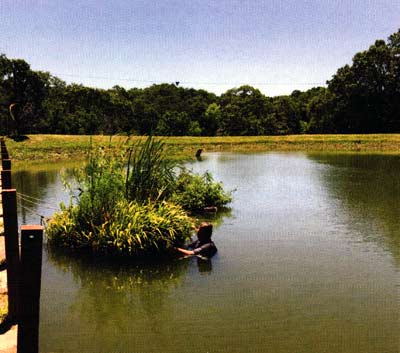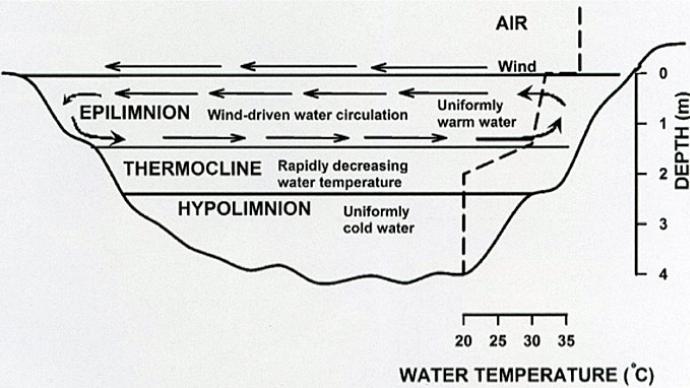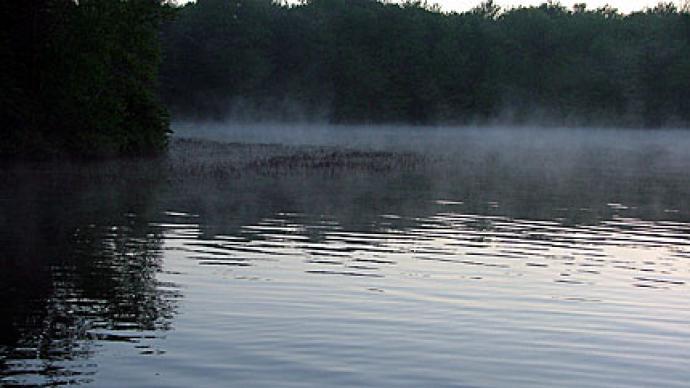
The hydrologic cycle is a significant aspect of nature's routine. I want to give an overview because most people do not know enough about it to fully appreciate it. Like most folks, I knew about water and lack of water, having grown up in a hydrologically fickle world. Still, the first lecture I attended on hydrology in college was unforgettably revealing.
I had seen intense and lengthy down-pours, water standing in puddles, flowing across the land's surface, running in ditches and ravines, and overflowing from ponds and streams. I also witnessed summer droughts where water was less abundant, vegetation drooped, and pond waters receded into the borrow pits in front of pond dams. Small ponds even dried up completely, and the soil in their bottoms cracked. Small creeks had no visible flow, and sometimes, water was found only in small pools in deep reaches. I was amazed in dry weather when the grass was visibly greener and no longer droopy within a couple of hours after an afternoon rain shower.
The lecture was shocking because I witnessed all the events described above. Still, I had never connected the dots to reveal a carefully orchestrated water cycle that repeats itself ad infinitum. My earlier assumption that my generation was the smartest one yet was dashed when the professor explained that passages in the Bible by Job of the land of Uz and by King Solomon of Israel revealed that even the ancients knew of the hydrologic cycle. In Job 36:27-29, Job uttered, "For He draws up drops of water, which distill as rain from the mist, which the clouds drop down. And pour abundantly on man. Indeed, can anyone explain the spreading of clouds. The thunder from His canopy?"
According to King Solomon in Ecclesiastes 1:7, "All the rivers flow into the sea, yet the sea is not full. To the place the rivers flow, there they flow again." I have since studied the Bible enough to realize that Job saw the hydrologic cycle as the magnificent work of his creator. In contrast, the wise but old and disenchanted King Solomon saw it as nature's striving and repetition - all done under the sun is vanity and striving for the wind, he wrote.
We know more about the water cycle details today than the ancients. Radiation from the sun evaporates water from free water and moist surfaces. Plants transpire water into the atmosphere, drawing it up from the soil through their roots and into their leaves, from which it evaporates. The combination of evaporation and transpiration by plants is called evapotranspiration.
Air and the water vapor contained in it are caught up in the atmospheric circulation. Uplifting of air results from thermal conduction, movement of air over higher terrain, and by cold, heavier air masses (cold fronts) moving like wedges under warmer, lighter air masses. Uplifting results in the expansion of air masses in response to lower atmospheric pressure at greater elevation. Rising air cools, and cool air holds less moisture than warm air. The air becomes more saturated with moisture as it rises, and it will reach its saturation moisture content at some elevation. Water vapor will then condense into fine droplets of water, forming clouds. If conditions are right in the clouds, the water droplets will grow to become drops of liquid water, or when temperatures in clouds are below freezing, frozen water particles. Drops or ice particles that become large enough to overcome air turbulence will begin to fall. Some or sometimes all precipitation may evaporate before reaching the earth's surface. Frozen precipitation may or may not melt during descent, depending upon the air temperature.
When rain falls on vegetation or other objects above the land surface, it collects on surfaces until the interception capacity of these objects is filled. Water then drips or runs down onto the land surface. Rain may also fall directly on the land. Either way, the soil begins to absorb and infiltrate water downward. When the rainfall rate exceeds the soil's capacity to absorb and infiltrate water, water begins to accumulate on the land's surface. This water first fills the depressions on the surface and then begins to flow as a sheet downslope in response to gravity. Of course, water is continuously evaporating, but if the rainfall is heavy enough or light rain falls long enough, surface runoff will be generated and flow into water bodies such as streams, lakes, and ponds. Streams may overflow their banks depending on the amount of rainfall, causing floods. Ultimately, a part of the water entering most streams flows on to the sea. Dams have been built on many rivers to detain flood-stage stream flow for human use.
Most fishponds are usually made by placing small dams across watersheds to capture a portion of the surface runoff after rainfall events. Ponds must have a spillway to prevent water from overtopping and possibly breaching dams during or after heavy rains. Ponds also must have a watershed large enough to provide sufficient runoff to fill them and maintain their water levels within the necessary range throughout the year.
Water infiltrating downward through the soil eventually reaches an impermeable geologic formation through which it cannot, without great difficulty, infiltrate. Water accumulates in the geologic formation above the confining layer. This water-saturated layer, which holds water within its pores and fractures, is known as an aquifer.
The top of the water-saturated thickness of an aquifer is known as the water table. The water in an aquifer is slowly transmitted downslope in response to gravity. Aquifers discharge into streams where stream bottoms cut below the water table level. When water tables intersect the land surface, springs flow forth. Wells also are bored into aquifers to remove water for human use. The water entering streams from aquifers, called base flow, maintain stream flow in dry weather. The base flow will cause the water table to decline when there is insufficient rainfall to generate infiltration to replace the base flow and water removed by wells. Droughts and excessive extraction by wells from aquifers may cause a marked decline in water tables, resulting in a drastic decline in the discharge of streams, and wells may go dry.
Some fishponds are supplied by small streams and inflow from springs rather than relying solely on surface runoff. Nevertheless, such ponds may experience a decline in water level during drought.
The water in aquifers, like that of streams, also may flow into lakes or the sea. When excessive water removal from coastal aquifers draws down freshwater aquifers, seawater may intrude into aquifers, causing salinization.
Pond owners must realize that rainwater is relatively pure, containing only a few parts per million of dissolved minerals from dust and other atmospheric contamination. Water flowing over the land dissolves some minerals, but the water in ponds often is deficient in nutrients and alkalinity. The basic water quality of ponds varies greatly depending upon the characteristics of soils and watershed practices. Most ponds require regular fertilization, and some must be limed periodically.
It is good to remember that the planet at present has all the water it ever did have and all the water it ever will have. We cannot destroy water or make any more, but it is purified by solar distillation and returned within the hydrologic cycle. This cycle allows most parts of the world to have sufficient water, provided we attempt to live harmoniously with it.
Dr. Claude Boyd is a professor emeritus in the School of Fisheries, Aquaculture and Aquatic Sciences, Auburn University, Auburn, Alabama 36849. His work with water quality is internationally renowned. His most recent book, Handbook for Aquaculture Water Quality, is a must for anyone interested in learning about water chemistry and how it relates to your pond. It's technical and thorough but easy to read and understand. Buy it at www.pondboss.com in the online store.
Reprinted with permission from Pond Boss Magazine



